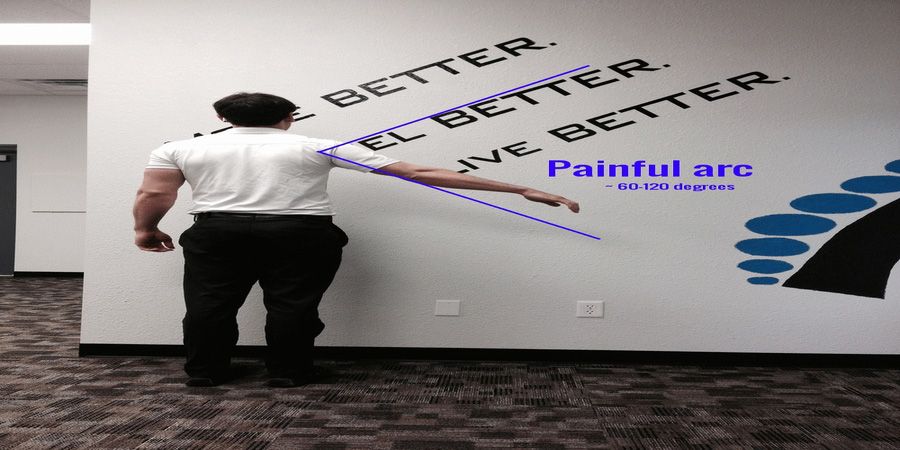Shoulder Impingement Syndrome and Treatment Options

What Is Shoulder Impingement Syndrome?
The term shoulder impingement is thrown around to describe every type of shoulder pain. Shoulder impingement syndrome varies, there are several types of shoulder impingement each with unique treatments and often times coupled with other shoulder issues. In an impingement syndrome, the rotator cuff and scapular muscles are not holding the humeral head (upper arm) firmly into the socket. The humeral head translates up and the contents of the subacromial space (space immediately above the humeral head) gets pinched. For the purpose of this blog we will focus primarily on subacromial impingement syndrome, which is the most common disorder of shoulder, accounting for 44–65% of all complaints of shoulder pain during a physician’s office visits.
Symptoms of Shoulder Impingement
The most common symptoms in impingement syndrome are:
-
Pain
-
Weakness
-
Loss of movement at the affected shoulder

The pain is often worsened by shoulder overhead movement and may occur at night, especially if the patient is lying on the affected shoulder. The onset of the pain may be acute if it is due to an injury or may be gradual if it is due to a gradual process such as an a spur. Other symptoms can include a grinding or popping sensation during movement of the shoulder.
The range of motion at the shoulder may be limited by pain. A painful arc of movement may be present during elevation of the arm from 60° to 120°. Passive movement at the shoulder will appear painful when a downwards force is applied at the acromion but the pain will ease once the downwards force is removed.
Shoulder Impingement Causes
This is very hard to explain, more often than not it is an issue of multiple issues causing the pain in the shoulder. Two general types of impingement are primary and secondary impingement. Primary impingement means that the impingement is the main problem with the person. A bony problem due to a persons anatomy would be a good example of this. In primary impingement the contents of the subacromial space (space above the upper arm bone) are pinched due to the specific shape of that persons shoulder blade.
Secondary impingement means that someone is causing impingement, perhaps their activities, posture, tightness, or muscle imbalances are causing the humeral head to shift in it’s center of rotation and cause impingement. Patients with this type of impingement have changes in shoulder blade movement that differs from healthy patients. Their shoulder is not moving normally.
The Behm Muscle & Joint Clinic Approach for Shoulder Impingement
The Behm Muscle & Joint Clinic approach to shoulder impingement begins with a full physical examination. We do not take films at our clinic however proper orthopedic and functional exams allow us to get an idea of what is causing your shoulder pain. Once we are able to identify the factors causing you pain, our services of Active Release Techniques, Chiropractic adjustments, Dry Needling, Rehabilitation exercises will all be used in a patient-centered treatment plan to address muscle imbalances, joint restrictions, movement concerns and shoulder mechanics. With many shoulder pain patients the goal is to not only alleviate your pain but to correct the imbalances/mechanics with lead to the shoulder impingement to begin with.
If you or someone you know is suffering with shoulder pain or shoulder impingement in the Omaha area, do not hesitate to contact the clinic at 402-292-1450 or schedule an appointment online.
Content written by Dr. Adam Behm, DC, CCSP®
Schedule an appointment with our chiropractic team today!